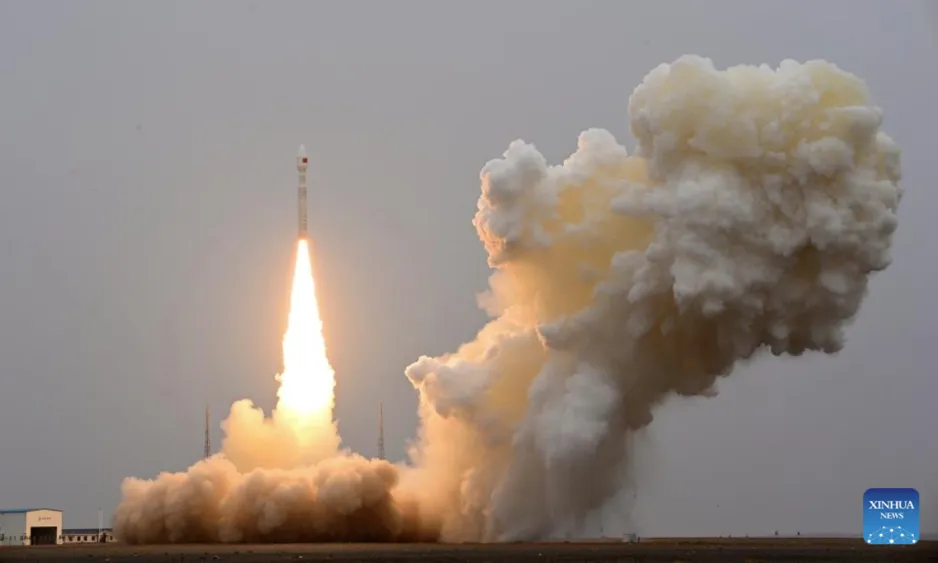Guangdong Unveils Action Plan for Integrated Commercial Space Ecosystem

In a significant move to bolster the commercial space industry, Guangdong Province in South China has introduced a comprehensive 21-point action plan aimed at fostering a high-quality development environment for the sector from 2025 to 2028. This initiative seeks to establish a fully integrated commercial space ecosystem, encompassing essential components such as launch services, satellite-rocket collaboration, and space-to-ground services.
As part of the plan, Guangdong aims to facilitate investment in satellite constellations serving both civil and commercial needs. To streamline project progress, the action plan provides a 'green channel' for project approvals and assists businesses with the coordination of satellite frequencies and orbital resources, as detailed in the official announcement.
The governmental action plan also introduces support for the creation of ground station network nodes, which include satellite receiving stations, tracking and control stations, and data relay stations tailored to the requirements of commercial satellite operations. The plan also encourages the global deployment of these ground stations and outlines a financial support framework that allocates up to 2 million yuan per node, with a total financial ceiling of 10 million yuan per enterprise.
In a bid to enhance local industry ecosystems, the Guangdong provincial government is committed to fostering cluster development within the space launch and satellite sectors. Policies aimed at supporting the development of key first-unit technical equipment, including rockets and satellites, have been outlined, with financial rewards ranging from 7 million to 9 million yuan for eligible complete equipment.
The document highlights the establishment of specialized commercial space industrial parks, urging local governments to leverage their unique strengths for differentiated development. These parks will be planned according to regional conditions and are intended to encourage the concentration of upstream and downstream enterprises along the industry chain.
With regard to satellite applications, the action plan calls for an acceleration of satellite internet projects in burgeoning areas such as low-altitude economies, mobile communications, and smart cities. It proposes the initiation of significant demonstration projects tailored for innovative applications, along with efforts to enhance service quality and broaden application scopes in midstream sectors such as aviation and maritime.
Furthermore, the plan emphasizes the potential of international trade and economic collaborations within the Guangdong-Hong Kong-Macao Greater Bay Area. It advocates for the active participation of commercial space enterprises in the formulation of global regulations and standards for outer space and includes provisions for a one-time reward of up to 500,000 yuan to incentivize such engagement.
The commercial space sector has regained prominence in the 2025 Government Work Report, underscoring its designation as a strategic emerging industry that holds promise for the future. Regions including Beijing, Shanghai, Hubei, Chongqing, Guangdong, and Hainan have responded with policies aimed at propelling the growth of their respective commercial space industries.
In line with these regional developments, Shanghai announced on April 24, 2025, a series of measures designed to elevate its commercial space industry to a market value of approximately 100 billion yuan by 2027. These measures encompass funding subsidies for the development of commercial rockets and satellites, providing up to 300 million yuan in support to enhance the speed of industrialization.
Not to be outdone, Beijing had earlier rolled out an action plan in January 2024 which charts a course for rapid innovation and development in the commercial space sector through 2028. This ambitious plan aims to incubate more than 500 high-tech firms, over 100 specialized innovative companies, and at least 10 unicorns while also establishing more than 20 publicly listed enterprises.
Read These Next

Domestic commodity futures decline sharply lithium carbonate hits limit
Caixin reports that on August 20, the commodity futures market faces pressure, with lithium dropping 8% and overall poor performance.

Legal Implications for Xinjiang Tianhe Shanshi's Finances
Analysis of the progression of legal proceedings involving Xinjiang Tianhe Shanshi Construction Engineering Co., Ltd., focusing on financial implications and investor considerations.

Study Disputes Kennedy's Vaccination Committee Claims
Critique of Robert F. Kennedy Jr.'s disbandment of a vaccination committee, examining new USC study findings on conflicts of interest and implications for public health policy.
